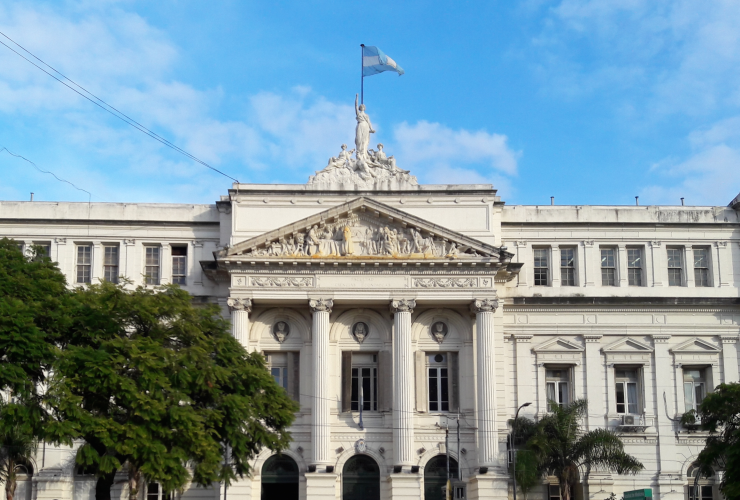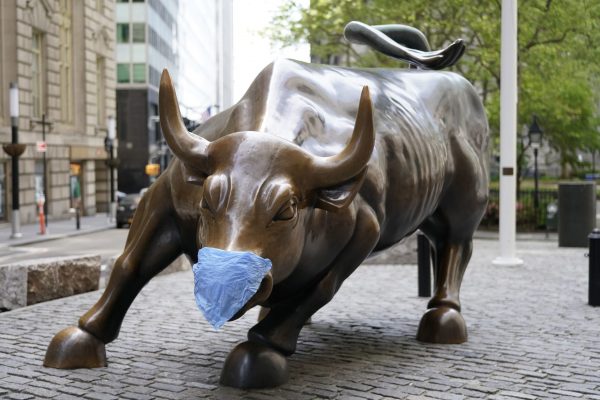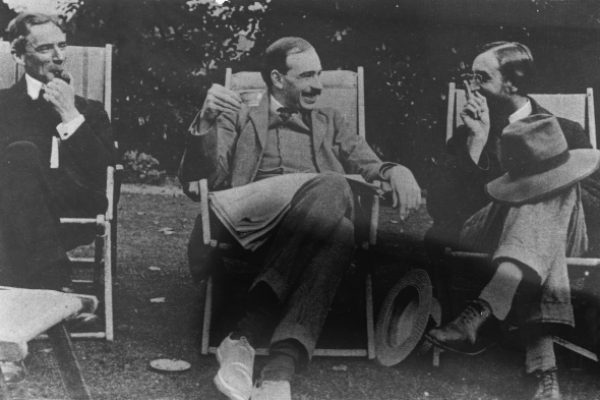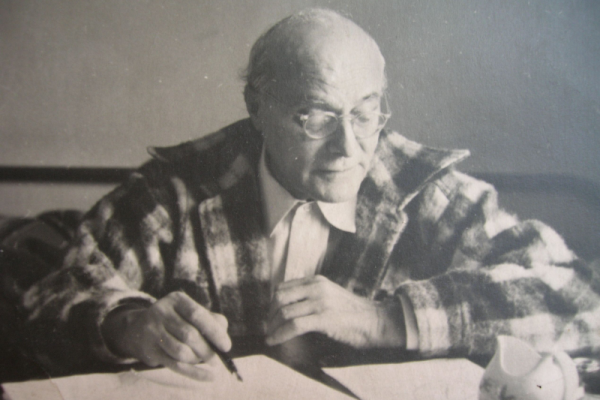As disillusionment with neoliberalism has grown over the last decade, many have called for an alternative vision of political economy—one that rejects market fundamentalism, embraces a notion of the public good, and remains sensitive to the way politics, economics, and ethics are deeply intertwined. In this effort to imagine new futures, it can be helpful to return to neglected resources of the past, and one striking example of vibrant economic thinking comes from Latin America in the late nineteenth and early twentieth centuries.
In the late nineteenth and early twentieth centuries, Latin America fundamentally reimagined the relationship between political economy and economic policy.
This rich legacy is often obscured by a mistaken assumption. The conventional account has it that classical political economy (CPE)—with its emphasis on self-regulating markets, free trade, and the pursuit of individual self-interest—was the dominant approach in Latin America from independence until after World War II, when new ways of thinking about development economics, pioneered by Argentine Raúl Prebisch and others in the 1950s, displaced the old paradigm. This standard story points out that in the late nineteenth century Adam Smith and David Ricardo were widely cited by Latin American authors, that John Stuart Mill’s Principles of Political Economy (1848) became a bible of economic wisdom, and that the idea of comparative advantage became naturalized. Laissez faire governments of the time parroted the theory, we are told, and allowed the proceeds of primary product exports to accumulate in the hands of a minority, with little concern for the rest of the economy. If industrialization took place—and economic historians have found more and more of it, earlier and earlier—it was despite, not because, of any deliberate policy, let alone a theory.
But this standard account is deeply misleading. Latin American economic thought—especially after 1870—was far more than a rote elaboration of classical ideas; it fundamentally reimagined the relationship between political economy and economic policy. If classical theories went unchallenged, how do we explain the rise of economic nationalism in the region, from Brazil’s manipulation of coffee prices in 1906 to Mexico’s revolutionary constitution of 1917 and the founding of a state-owned oil company in Argentina in 1922? How do we explain the proliferation of societies and schools for the promotion of industry—some civil, some state—throughout the region in the late nineteenth century? What about the emerging interest in “scientific” or technocratic government, which paved the way for major reforms in Chile and Peru during the 1920s, when new state economic institutions were created—including a central bank in Chile—and major programs of public works were undertaken? And what of the fact that, while many Latin American public figures of the time did endorse free trade, tariffs in Latin America were among the highest in the world from 1880 to 1914?
In short, Latin American economic thought was far more diverse than we typically assume. Its deeply inventive and critical engagement with the laissez faire orientation of much classical political economy provides welcome resources today as many seek to rethink the fundamental nature of markets and morals.
The distinctive Latin American inheritance of classical political economy texts provided the backdrop against which these innovations in economic thinking played out. A product of the Age of Revolution, the subject of political economy was a self-consciously modern intellectual endeavor from the beginning. By the time of the wars of independence in Latin America (1808–1826), it was widely believed to hold the secrets to socioeconomic success: “[Most revolutions fail] under the weight of disunity, ambition, vested interests and cowardice. A lack of . . . political economy plays a great part in these unfortunate outcomes,” noted El Monitor Araucano of Santiago in 1813. It is hardly surprising that some of the earliest chairs of political economy in the world were founded in Latin America, where part of the case for independence had been to introduce the modern knowledge supposedly denied by Iberian rule. Political economy was usually taught as part of a law degree, and it was also included in the curricula of colleges that prepared students for university, so most people who had gone beyond elementary education would have taken it.
A product of the Age of Revolution, the subject of political economy was widely believed to hold the secrets to socioeconomic success.
Yet even though political economy was widely promoted in Latin America as a standard-bearer of modernity, many of those who studied and taught the subject were skeptical about several elements of the classical approach. Their criticisms have been overlooked in part because the history of the discipline of political economy was written mainly during the late nineteenth century in Britain or the United States. In the newly independent countries of Latin America, however—especially in Argentina, Chile, and Peru—the classic texts were interpreted and evaluated differently, for both theoretical and empirical reasons.
Adam Smith’s Wealth of Nations (1776) was undeniably a gift to independence leaders seeking international recognition, especially in London, for their case against mercantilism. As Smith’s work increased in prestige, many of these Latin Americans found it more persuasive to cite him in support of “freedom to trade,” which meant with whatever country offered the best terms, rather than “free trade,” which meant the absence of protectionist tariffs, a policy that—they rightly suspected—would work to the advantage of more industrialized economies. In that respect, Latin American borrowing of Smith’s arguments was closer to his own aim—to establish that a country’s wealth should be measured by its productive capacity rather than by its bullion reserves—than most later appropriations of his ideas by advocates of laissez faire.
After independence, everyone talked of free trade at first, out of hope for a prosperous modern future, one free of antiquated colonial restrictions. But when new governments began to grapple with the challenges of adjusting to severed trade routes and of building economic institutions from scratch, CPE was found to have less to offer. Its theories had been developed in societies in which the rule of law, territorial borders, and fiscal legitimacy were all relatively secure: the main threat was deemed to be demographic, the risk that the population would outgrow productive capacity. In the underpopulated lands of Latin America, by contrast, the specter of a Malthusian crisis did not loom large. The hidden hand of the market, which Smith’s successors emphasized far more than he had done, could not perform its transformative magic in societies where, as Argentine Esteban Echeverría pointed out in 1837, “nothing is stable, everything is unforeseen” and neither property rights nor contract law could reliably be enforced. To many nation builders in Latin America, it looked as if the causation had to be reversed: law, institutions, and education would create an efficient market, not the other way around.
Some of the earliest chairs of political economy in the world were founded in Latin America.
Intellectuals in Latin America were thus among the first people anywhere to argue that CPE, far from being universal, was very much of its own time and place. Starting in the first courses taught in the 1820s, efforts were made to determine the extent to which CPE was applicable to local circumstances. Consider Argentina. It has often been observed that the textbook for the first course at the University of Buenos Aires (UBA)—established in 1821—was James Mill’s Elements of Political Economy (1821), which blended Ricardo’s theory of comparative advantage (published in 1817) with utilitarian principles. It is less often noted that President Bernardino Rivadavia’s founding decree for the university’s chair in political economy specified the need to adapt CPE to “the practicalities of new countries” and stipulated that the second year of classes should be spent discussing how to apply the theory to the economy of the River Plate. Rivadavia also established a statistical register (1822–27), arguing that it was essential to the successful application of economic theory.
The following decade, Esteban Echeverría called in 1837 for “a truly Argentine economic science,” and at the inauguration of the University of Chile in 1843 Andrés Bello declared that in studying “the special features of Chilean society from an economic point of view,” the university intended to be “entirely Chilean: if it borrows from Europe the deductions of science, it does so to apply them to Chile.” In Peru, meanwhile, Juan Espinosa noted in his widely consulted dictionary (1855) that political economy was “a science of experiments” that, like medicine, required “many modifications depending on the state of the societies” in which it was practiced. The drive toward applied knowledge was strengthened because in Latin America political economy was written by individuals involved in making and implementing policy. As had happened in the Kingdom of Naples, an important intellectual center of political economy in the eighteenth century, economic ideas were tested for practical efficacy as well as theoretical rigor.
Many of the early Latin American courses in political economy were based on the work of the French liberal economist Jean-Baptiste Say. In the Anglo-American tradition, Say was assimilated as the great clarifier of Smith, credited with distilling a coherent system from Smith’s exuberant mix of ideas but not with adding many of his own. In Latin America, however, Say was read as a republican working out how to adapt Enlightenment principles derived from small-state models to a large, modern country, which was precisely how republicans in Spanish America (and, in different ways, policy-makers in imperial Brazil) saw their own project. Say’s appeal lay above all in his famous law—supply creates demand—which refuted the physiocrats’ view of consumption as the engine of an economy and opened up the attractive possibility of achieving prosperity by boosting production.
Many other aspects of Say’s work resonated in Latin America, too: his clear definition of the public good and exhortation to pursue it before private self-interest; his rejection of hierarchical social ranks; his emphasis on virtuous manners; and his efforts to popularize political economy, notably in the famous catechism, which was widely distributed throughout the region. Similarly, by mid-century John Stuart Mill’s Principles of Political Economy (1848) was attractive to many Latin Americans not for its echo of his father’s work but for its critique of reductive utilitarianism and a renewed emphasis on the wider social context of economic decision-making.
It was by no means only the classical political economists who were read in Latin America. Everyone writing about political economy anywhere made ritual reference to Smith as the founder of the subject and Say as its great popularizer. But a wide range of other readings fertilized thinking in Latin America, including work by Italian, Spanish, French, and U.S. authors, some of whom advanced protectionist ideas or other criticisms of CPE.
To many nation builders in Latin America, it looked as if causation had to be reversed: law, institutions, and education would create an efficient market, not the other way around.
There was thus, from the outset, a widespread sense that CPE did not fit the circumstances of the new countries of Latin America. There was also a major philosophical objection to the theory, expressed by both conservatives and liberals. For its critics in Latin America, political economy was not so much the “dismal science,” as the British historian Thomas Carlyle put it protest against its pessimism, as the “lifeless science.” CPE’s analytical separation of the economic from the intellectual and the moral was seen by many Latin American thinkers as a “mutilation” of human nature. Argentine political theorist and diplomat Juan Bautista Alberdi expressed a common view in calling for a more philosophical approach to economics, one that would take “law, morality [and] religion” into account, because “neither the individual nor society are maintained by material needs alone” and “economic production is not the whole purpose of society.”
Similar arguments reappear over and over again, in a wide variety of sources, well into the twentieth century. By the mid-nineteenth century, the self-regulating market was hardly mentioned in discussions of economic policy in Latin America. There was widespread rejection of a commodified idea of virtue and, indeed, of the very concept of an economy that could be isolated from other elements of society. In certain contexts, such unorthodox thinking began to be translated into policymaking.
One important terrain in which these ideas played out was the debate over economic nationalism. A steady stream of historical research over the last few decades has shown that there were strong pockets of protectionism in various Latin American countries in the nineteenth century: Peru in the 1830s and 1840s and the 1870s; Mexico, among conservatives, in the 1850s; and the better-known Argentine López-Pellegrini School in the 1870s. In both Chile and Argentina, economic historians have identified persistent strains of protectionist thought throughout the nineteenth century. From the 1870s onward there was a gradual shift away from the kind of protectionism compatible with a liberal framework—a limited role for the state in the exceptional circumstances of new countries building infant industries—toward a version that embraced the state as an engine of development.
Intellectuals in Latin America were among the first to argue that classical political economy, far from being universal, was very much of its own time and place.
Analyzing these debates in terms of a conflict between free trade and protectionism tends to limit the discussion to the question of tariffs on imports and exports. They were undeniably important, but more significant still is the fact that though debates often began with tariffs, they rarely ended with them. Thinking about the implications of laissez faire led to wider doubts about the supposedly beneficial role of foreign powers in the economy, including criticism of the repatriation of profits and concerns about control of resources. One often overlooked contribution of from this period is the argument that desirable state support for local industries went far beyond tariffs to encompass a range of measures designed to “establish the rule of the social interest over the private interest,” as Vicente Fidel López put it. The real debate, as it developed in the 1890s and 1900s, was between proponents of a free market and advocates of fomento (fostering), a term that increasingly came to the fore as a marker of the role of the state in stimulating economic activity.
Argentina is a telling example. The country has often been characterized as the epitome of free trade, yet a close look at ideas and policies there shows that the picture was far more mixed. A bold official commitment to free trade was made during the presidency of Bartolomé Mitre (1862–68), who famously declared that the Paraguayan War (1864–70) was a victory not only for Argentina but for free trade. There was an element of truth to his claim, in that merchants in Buenos Aires and Entre Ríos had made a fortune importing supplies for the allied troops of Argentina, Brazil, and Uruguay. But the reaction against free trade for the whole country was immediate in the López-Pellegrini School of the 1870s, which has been identified as an early manifestation of economic nationalism.
López sought to refute the arguments of Ricardo and Thomas Malthus, which ran directly contrary to Argentina’s policy of attracting immigrants, who in the 1860s had begun to arrive in large numbers. He interpreted Argentina’s 1873 balance-of-payments crisis as the result of exporting primary products with no value added and henceforth became the leader of a campaign for moderate economic nationalism. Even though arguments for a full embrace of protectionism were famously defeated in congressional debates of 1875–76, the period of national organization (1862–80) saw a degree of state support for industry (for example, wine, flour, and textiles) in the form of credits, guarantees, tax exemptions, infrastructure building and the spread of technical education—a set of policies close to what Adam Smith himself had advocated. It may not have been enough to create the conditions for real success (Argentina was still heavily dependent on imported textiles in 1913), but it does not fit the picture of unquestioning acceptance of the doctrine of comparative advantage.
Even though exporting primary products to Europe did bring high rates of growth to Argentina, the argument was soon made that in the longer term such policies went against what was beginning to be identified as the national interest. In 1870 Emilio de Alvear, a fully paid-up member of the Argentine oligarchy and a legal representative of British firms, set out the risks of Argentina’s reliance on two primary products and one buyer. He called for reform of the “exaggeratedly liberal” laws on trade and industry, arguing that “with wool and hides” Argentina would never be a great nation, especially as the price was set by the consumer so that the country did not even retain the value of its two main exports.
For its critics, political economy was not so much the “dismal science” as the “lifeless science.”
Free trade was good for Britain, he argued, but it meant “degrading servitude” for Argentina, which needed its own industry as a matter of basic security: if there were to be a prolonged war or a blockade, “we would have no bread to eat, because even flour is imported.” Moreover, it was absurd to transport clothes and household items all the way from Europe when there were plenty of European workers in Argentina who could make them. Writing from the United States, where he read Henry Carey’s letters to Lincoln arguing for protectionism for U.S. industry, Alvear advocated flexible tariffs for Argentina (with exemptions for provincial industries) and lower internal transportation costs. The main argument he adduced from Carey was that a healthy external balance of trade required an expansion of internal trade, so free trade was for the internal not the external market. Protectionism was natural, he argued, maneuvering to dislodge the association between the free market and nature. Far from being limited to tariffs, his version of protectionism encompassed technical education as well as infrastructure.
Even more cautious political economists increasingly combined ritual obeisance to liberalism with policy prescriptions that stretched any conventional definition of it to the limits. José Antonio Terry, three times minister of the Treasury in Partido Autonomista Nacional governments, described a liberal framework as fundamental to the international connections “that the solidarity of modern civilization requires” but nonetheless he came to advocate moderate state intervention in the economy, including the use of taxation to address social inequality. As professor of public finance at UBA (from 1899 until his death in 1910), he opposed dejar hacer, dejar pasar with the argument that a government should be an engine of progress, an organ of public opinion, and a protector of all legitimate rights.
In a highly esteemed analysis of the Argentine economic crisis of 1892, Terry discussed the advantages of socialismo del estado, testing out ideas from thinkers of the French Third Republic such as Léon Gambetta. He analyzed the difficulties that followed from Argentina’s dependence on foreign investment, especially in infrastructure. His methodology, like that of many critics of CPE, was comparative and historical—again, placing him closer to Smith than to those who claimed to be his heirs.
Similar critiques emerged in Chile and Peru. In Chile, unlike the other two countries, CPE was systematically taught at the university level, and by the end of the century there had been a marked shift away from CPE to advocacy of fomento. One marker of change came in 1886, when Marcial Martínez published a series of letters in which he argued that the fall in value of the Chilean currency since 1878 and the corresponding increase in import prices created an opportunity for industrial development if protectionist measures were carefully applied.
There was even a popular novel in favor of protectionism, Luis Ríos, o una conversación al proteccionismo (1884), by Manuel Aristides Zañartu, perhaps intended as a riposte to Harriet Martineau’s fictional homilies on laissez faire, the Illustrations of Political Economy (1832). One of the central characters in Luis Ríos was “The Economist,” a champion of free trade who appeared in a most unflattering light: “cowardly, gluttonous, lazy, petulant, without knowledge or wit,” as noted in an irascible review by Zorobabel Rodríguez, a staunch opponent of state intervention in the economy. Zañartu, who was briefly minister of the Treasury under Balmaceda, planned to found a national bank that offered low-interest loans to help promote agriculture and industry, thereby anticipating the creation of the Banco Central in 1925, but revolution broke out. Even without the institution, it has been argued that his plan provided a basis for financial planning and stability in Chile for more than three decades.
From the 1870s there was a gradual shift to a vision that embraced the state as an engine of development.
In Peru, meanwhile, Pedro Emilio Dancuart and José Manuel Rodríguez spent many years compiling a remarkable twenty-four-volume collection of data from the Peruvian Treasury, covering 1821 to 1895. In 1895 the government of Nicolás de Piérola founded a Ministerio de Fomento y Obras Públicas, hoping to emulate the success of the Mexican equivalent (1877), and began to gather information to support policy-making. Rodríguez, who seems to have been mainly self-taught in economics, published a series of innovative studies exploring the ramifications of the guano boom and bust, criticizing direct foreign investment, analysing capital flight, and condemning the parasitic behaviour of Peru’s economic elites.
Liberal in outlook at first, Rodríguez advocated selective protectionism in practice and increasingly favoured state interventionism to promote development, during the 1920s drawing inspiration from European fascism. Economic historian Carlos Contreras Carranza, who has uncovered the little that is known about Rodríguez’s life, described him as “one of the first Peruvian economists.” Perhaps most importantly, he founded the periodical in which most debate about Peruvian economics took place for three decades, El Economista Peruano (1909–40). His own articles consistently emphasized the close relationship between economic policy and quality of life in moral as well as material terms, a concern which also came to the fore in other countries.
Later, in early twentieth-century Chile, it became fashionable to teach “social economy,” which studied the working and living conditions of the labor force and their voluntary associations. The change was reflected in the renaming of the chair of political economy at the University of Chile to the chair of political and social economy in 1901. For Armando Quezada Acharán, the first occupant of the renamed post, the lack of a social dimension was “a serious deficiency” of CPE. Quezada used a metaphor of nature to illustrate his sense of “a new spirit” in economic thinking: the “compacted ice” of the “great mountain” that was CPE had begun to thaw in the warmth of “currents of ardent life.” In some places, the melting ice exposed “arid rocks,” but in others it revealed “verdant oases.” With the rise of “the social question” and the teaching of social economy, solidarity was proposed as the route to prosperity.
The real debate was between proponents of a free market and advocates of fomento (fostering).
Here the Chileans were drawing on late nineteenth-century French ideas, but their interest in them can be understood only in light of the long Latin American tradition of doubts about CPE. The extent to which a humanistic outlook grounded in nature and informed by classical references began to displace economic individualism is captured in the following quotation from Quezada: “our country, endowed with a beautiful and bounteous Nature, populated by a people [una raza] not yet abundant but intelligent and vigorous, could be the Arcadia dreamed of by the poets” if everyone could forget “political or class distinctions” and work together in solidarity. Such courses in political and social economy, taught to law students at the University of Chile and the Catholic University, were part of the intellectual formation of individuals like Pablo Ramírez Rodríguez, an early technocrat who led comprehensive economic and administrative reforms under President Carlos Ibáñez in the late 1920s.
But there were also more politically radical positions adopted by proponents of social economy. A leading example is Malaquías Concha Ortiz, whose analysis of unequal trading relations between Latin America and Europe, presented at the fourth Latin American Scientific Congress of 1908, was no less trenchant than that of the dependency school of economic thought of the 1960s. When competition occurred between nations at different levels of industrialization, he averred, “the most dominant crush the most backward . . . deprive them of any industrial future and condemn them to . . . economic servitude”—in other words, what the dependency theorists called the development of underdevelopment. Competition was a means of attack for powerful nations, protectionism the only means of defense, in a Darwinian “struggle for existence in the economic domain,” he argued, reflecting the fears evoked in Latin America by Darwin’s emphasis on the possibility of extinction.
The risk Concha identified was the closing of markets for agricultural produce, rather than the fall in relative prices that later preoccupied Prebisch. He saw the European triumph as an intellectual one: Latin American policymakers had been conned into “an absurd, unthinking cosmopolitanism, calculated in the interest of the nations where it was created.” Concha called for Latin America to regain the initiative by urgently producing new ideas and organizations in “industry, commerce, navigation and credit” to serve their own interests. Social economy was a substantial field in Latin America during the early twentieth century, culminating in the Congreso Internacional de Economía Social held in Buenos Aires in 1924. There was a revival of interest in the twenty-first century in relation to co-operative movements and community development policies.
The economic history of Latin America shows all too clearly the dangers of presuming that theories are universally valid.
In sum, during the late nineteenth century a variety of new approaches to political economy were developed in Latin America, based on the ideas of fomento and social economy. These critiques of CPE came from individuals working from disparate perspectives, from high statesmen to university professionals to workers’ leaders. Yet they shared a common theoretical concern, which was to retain a conception of the public good. Their diverse assaults on CPE stimulated a wide range of economic analysis—including studies of currency, taxation, banking, infrastructure, communications and public land use—that has only recently come to the attention of historians.
As this history makes plain, all the elements of what came to be known as development economics were in place—even if not always systematically explored—in the work of political economists in Latin America between 1870 and 1930. These thinkers had developed critiques of the theory of comparative advantage, arguing that it worked more to the benefit of industrialized countries. Concerns had been expressed about over-dependence on export markets, about repatriation of profits by foreign investors, and about giving up control of banking, infrastructure, and natural resources to foreigners. Doubts about the applicability of CPE to the new countries of Latin America surfaced early on, but continued to be expressed within the framework of liberal economics for the half century or so after independence. Then, toward the end of the nineteenth century, a decisive shift took place in how the role of the state was conceived, with increasing advocacy of an active role for the state as a promoter of industrialization, and increasing attention to the interconnectedness of economic, political, and social developments. Many contemporary economists have focused on the detrimental effects of separating economics and ethics. Similar points have been widely and consistently made in Latin America since the 1830s.
As in other areas of intellectual endeavor in nineteenth-century Latin America, a comparative and historicizing methodology was seen as the best way to bridge the gap between the realities of circumstances in the Americas and the theories developed in Europe yet projected as universal. The distinction between theoretical and applied knowledge was—and still is—one of the divisions most ruthlessly policed by gatekeepers of knowledge. Originality was confined to the free-floating zone of theory, which immediately rendered derivative any work applying principles to different contexts, even though that was exactly the method followed by Adam Smith in the works that founded the subject.
So often it is said that Latin American economists were not innovative because they did not produce new theories. Even Prebisch—nominated for a Nobel Prize in 1977—has been branded more of a policymaker than a theorist. Yet as Latin American economists have repeatedly pointed out, the economic history of Latin America shows all too clearly the dangers of presuming that theories developed by wealthy societies are universally valid.
Editors’ Note: This essay is adapted from REPUBLICS OF KNOWLEDGE: Nations of the Future in Latin America by Nicola Miller. Copright © Princeton University Press, 2020. Used with permission.









